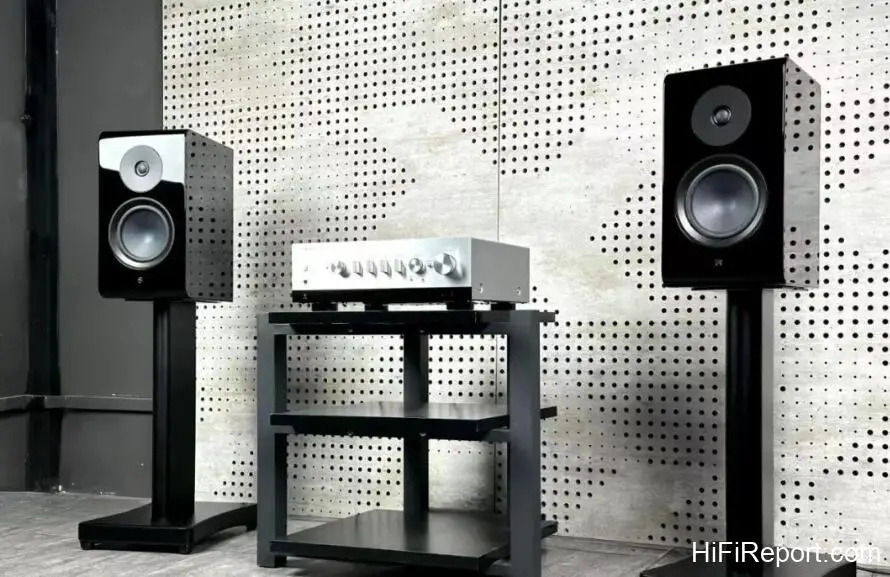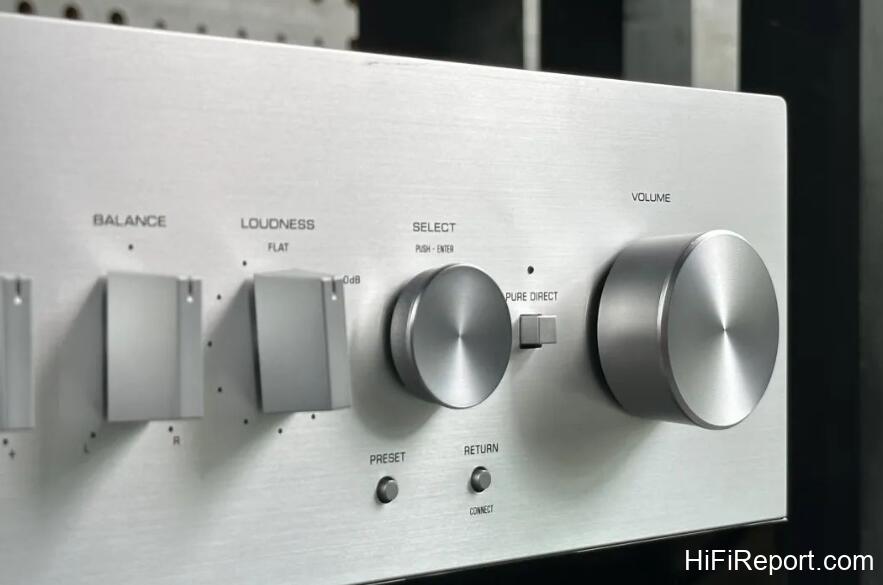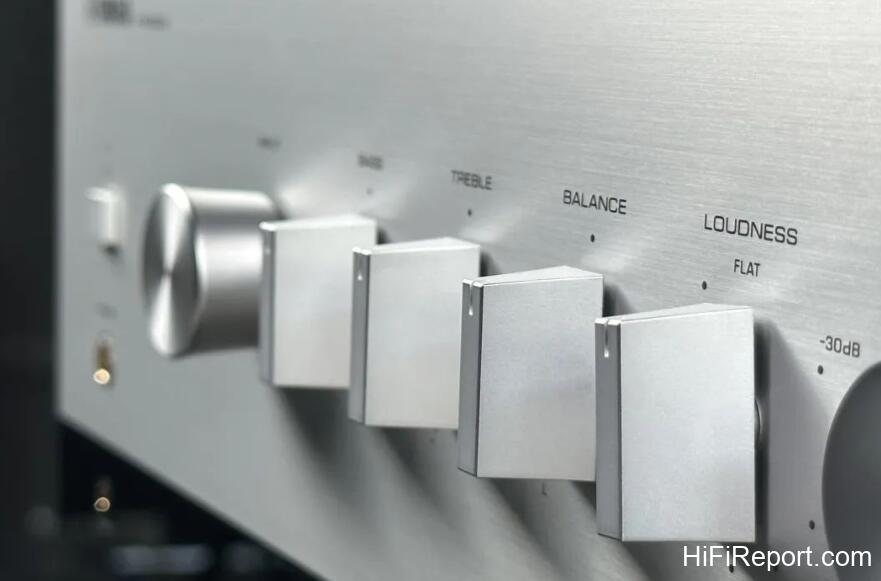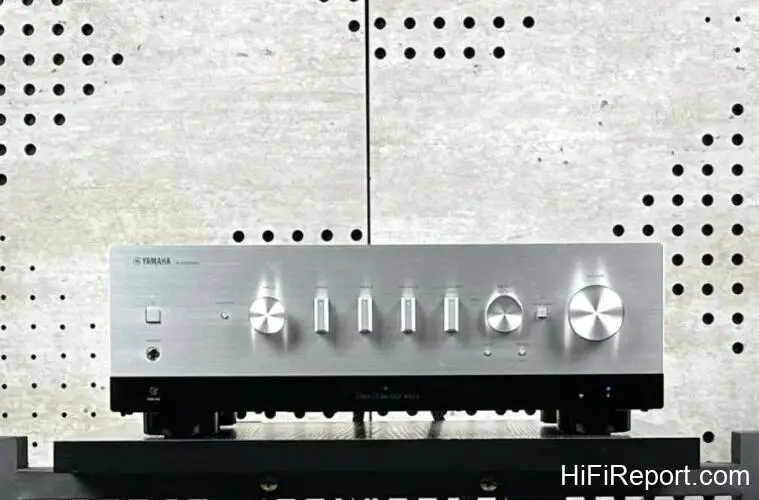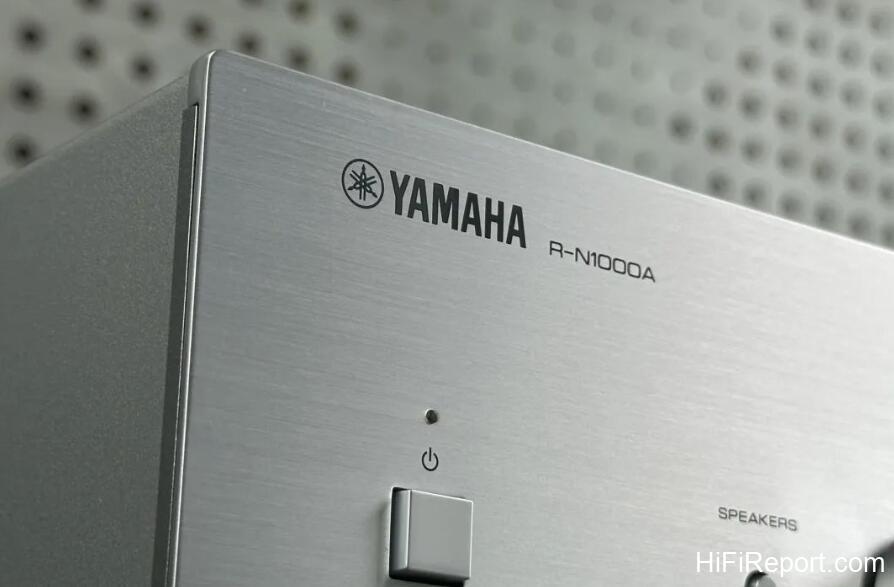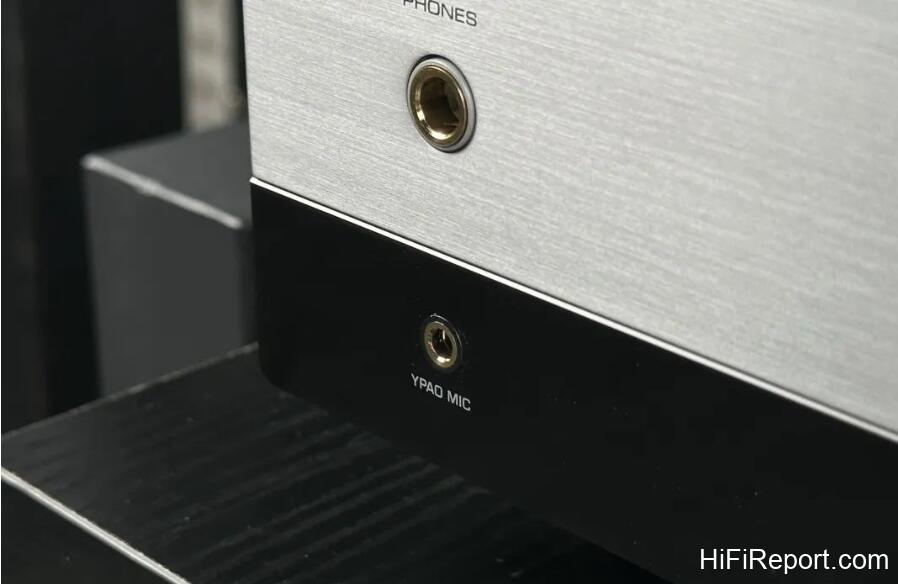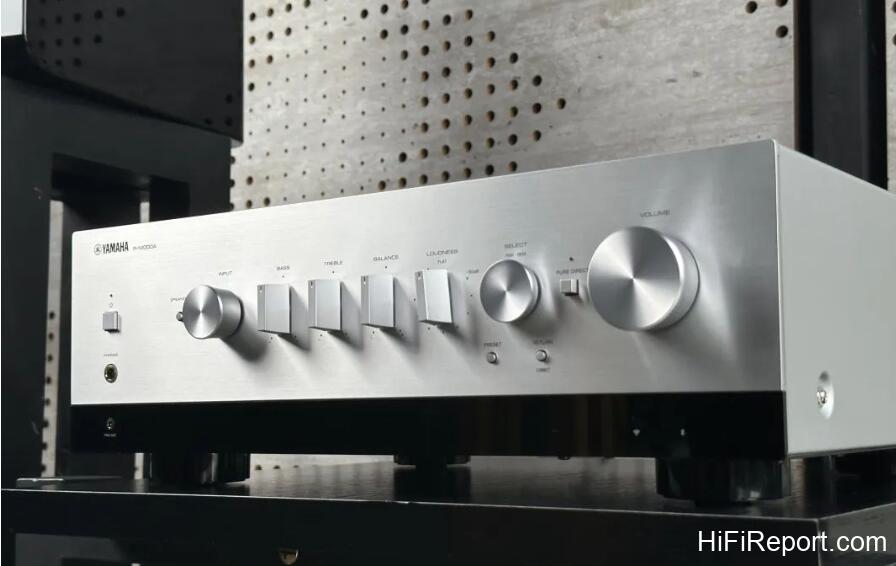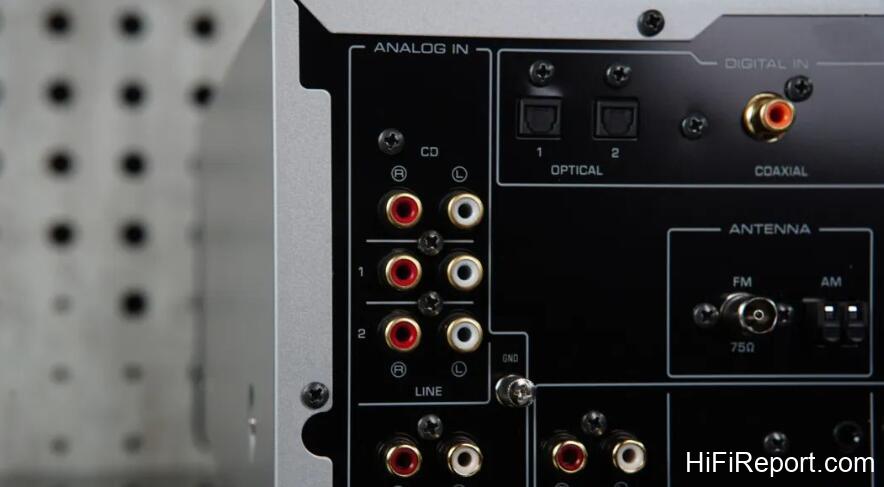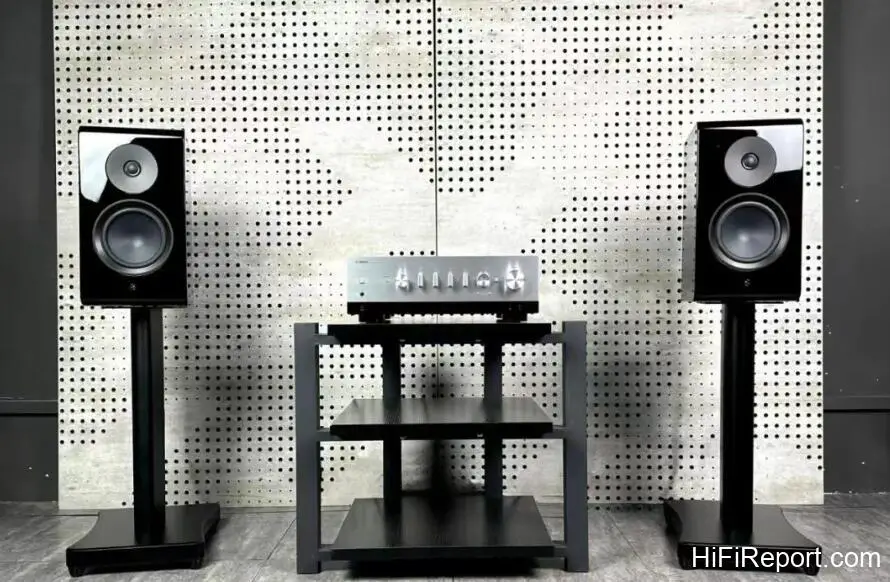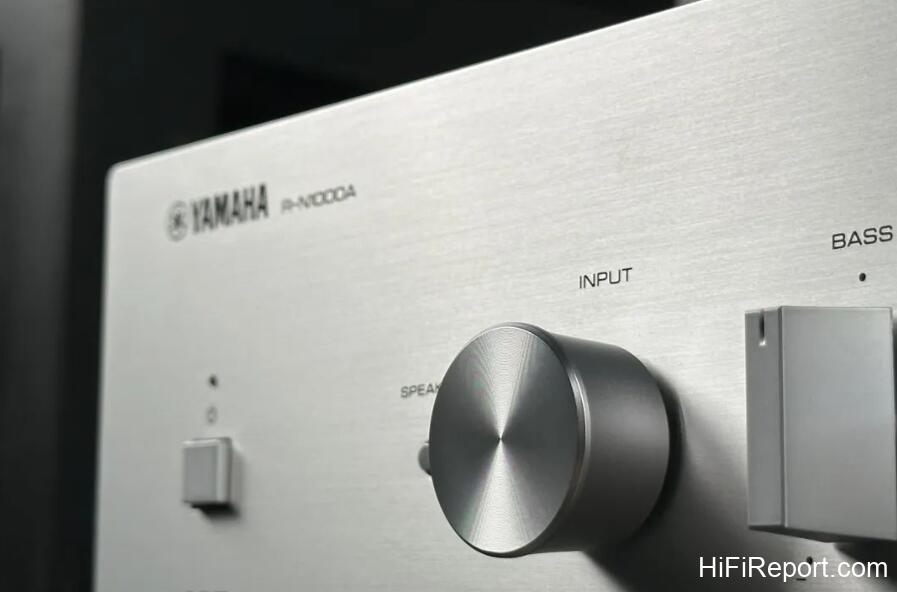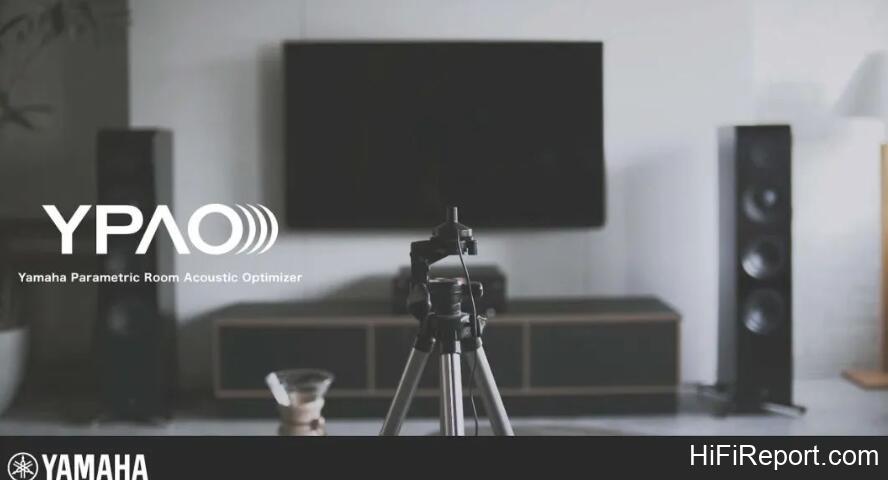Yamaha R-N1000A Network Receivers Review
“Sharing Passion & Performance” is a familiar slogan that aptly captures Yamaha’s image. It signifies Yamaha’s diverse product range, including audio and musical instruments, and reflects its commitment to designing products based on consumer needs.
In particular, Yamaha excels in the audio sector by staying attuned to current trends and consistently delivering user-friendly, feature-rich, durable, high-quality products to meet everyone’s listening needs.
Design
The recently launched Yamaha R-N1000A streaming high-fidelity amplifier undoubtedly embodies the qualities mentioned. Built on the foundation of an all-in-one integrated amplifier, it boasts a high-precision D.A.C. and Yamaha’s specialized YPAO room acoustic optimization technology for Hi-Fi products. Furthermore, it supports MusicCast and multiple streaming services.
Whether you’re a convenience-oriented novice user or a high-quality sound enthusiast, this Yamaha amplifier can fulfill your desires, unlocking the true joy of listening.
Yamaha’s extensive product line, encompassing music creation, mixing, and sound playback across different domains, reflects its profound understanding of the relationship between sound and music. It acknowledges the perspectives of professionals on sound and their creative ideas.
This serves as an opportunity to further enhance Yamaha’s music-related products, taking steps towards delivering the authentic sound everyone desires.
In the era of streaming music, Yamaha’s goal should not merely be to provide users with convenient tools but to offer Hi-Fi audio that truly captivates the listener. This is why Yamaha has designed products that support streaming music playback, aligning with the “TRUE SOUND” objective.
The R-N1000A streaming high-fidelity amplifier exhibits a well-organized internal hardware layout, reinforced chassis rigidity, and supportive structures. It inherits Yamaha’s renowned design philosophy of “ToP-ART” (Total Purity Audio Reproduction Technology), prioritizing sound quality through strict symmetrical circuit layouts, short, direct, and low-loss signal paths, and a high-rigidity dual-layer low-vibration chassis as its solid foundation.
The visible support structures not only enhance rigidity but also help dampen harmful vibrations during operation. In addition to these measures, Yamaha has prepared a special resin frame called the “Art Base” and multiple reinforcement supports. They eliminate unnecessary resonance, ensuring the amplifier’s durability and robustness while delivering a pure sound experience.
To experience the marvelous sound quality of the Yamaha R-N1000A streaming high-fidelity amplifier, press the “Pure Direct” button on the amplifier’s front panel. This action will deactivate display menus, sound adjustments, and other operations, eliminating signal degradation to present you with pure sound quality.
For those with unique listening preferences, the panel features various knobs with different scales, allowing you to adjust high-frequency, mid-frequency, channel balance, and volume according to your taste to achieve your desired audio character.
Room acoustics can be a concern for many audio enthusiasts. In-home theater, Yamaha pioneered the YPAO (Yamaha Parametric Acoustic Optimizer) room acoustic optimization technology to address room acoustic issues. After years of refinement and technological advancement, Yamaha has taken it further by introducing a new version called YPAO R.S.C. (Reflection Sound Control) technology, which is implemented for the first time in the R-N1000A streaming high-fidelity amplifier.
This technology increases the dynamic range and improves the signal-to-noise ratio by 4dB (a 170% increase in signal level). Still, it also processes signals with 64-bit high precision to reveal cleaner, more detailed sound effects.
What are the differences between the two versions of YPAO? Allow me to explain. Most Hi-Fi systems chosen by audio enthusiasts are primarily configured as 2.0 two-channel setups, unlike home theater systems that pursue powerful bass and add subwoofers.
Regarding room characteristics, if audio enthusiasts set up Hi-Fi systems in spaces like living rooms or study rooms, they often have to contend with factors like T.V.s, furnishings, and windows, which can affect sound propagation. They might need to perform more than simple acoustic treatments on concrete walls or corners.
Therefore, when developing YPAO R.S.C. technology, Yamaha didn’t simply transplant the methods used in home theater systems, such as excessive equalization and significant adjustments to the bass. Instead, the goal was to restore recording details using minimal equalization. R.S.C., or Reflection Sound Control, can adjust the reflections of the front channels (the left and right 2.0 channels), improving clarity.
It can also reduce head margin (dynamic margin), increasing the separation between high-frequency signals and noise, resulting in a cleaner sound. After YPAO R.S.C. processing, your listening environment transforms into an ideal space for Yamaha, free from the factors that typically affect sound quality in residential rooms.
Including a D.A.C. (Digital-to-Analog Converter) chip in the amplifier is essential to accommodate audio sources other than CD players. The R-N1000A streaming high-fidelity amplifier features an advanced ESS SABRE ES9080Q DAC chip, preparing it for playback of Hi-Res and lossless audio source files.
When looking at the unit’s back panel, you’ll notice R.C.A., coaxial, optical, and USB interfaces. According to official specifications, the USB DAC function of the R-N1000A streaming high-fidelity amplifier supports native playback of D.S.D. 11.2MHz and P.C.M. 384kHz audio files. It can seamlessly play high-definition files purchased from various streaming music websites.
Furthermore, Yamaha offers another option – using the HDMI (A.R.C.) interface to connect your T.V. for an enhanced audio-visual real-time experience. This addresses the current trend of T.V.s often not prioritizing audio quality, allowing you to rediscover the joy of watching T.V. with improved sound.
Indeed, the R-N1000A streaming high-fidelity amplifier supports traditional CD players and accommodates turntables, digital media players, T.V.s, computers, smartphones, tablets, and even lossless music files stored on N.A.S. systems. It can work harmoniously with these devices to play the music you want to hear. Its robust internal output circuitry can also deliver a maximum power of 145W×2, making it suitable for bookshelf speakers and subwoofers.
Regarding wireless technology, the R-N1000A streaming high-fidelity amplifier supports Bluetooth and AirPlay 2 and incorporates Yamaha’s exclusive MusicCast multi-room wireless network system. This system allows you to manage Yamaha’s other music devices to play content on the same network. It seamlessly connects to streaming platforms like Qobuz and Spotify, allowing you to play your favorite playlists anytime.
Sound Performance
Only having an amplifier is not enough for music playback, right? After launching the R-N1000A streaming high-fidelity amplifier, Yamaha recommends pairing it with their bookshelf speakers, the NS-800A. These speakers were developed with the same “TRUE SOUND” goal, featuring signature mirror-polishing technology, patented R.S. (Resonance Suppression) enclosures, and sound absorbers. Combined with the amplifier, they produce a sound that aligns with Yamaha engineers’ pursuit of authentic audio.
While listening to the audiophile album “Tutti!”, I discovered its remarkable ability to reproduce details. I could discern the interplay of echoes between left and right channels and the sounds of triangles and tuned drums, achieving an “identify the sound’s location” effect through this system.
Regarding tonal quality, I experimented using the new album “Beyond The MOON” by Korean jazz diva Moon. The system falls into the transparency category, delivering clear and natural details with a certain richness in tonal quality without feeling burdensome or sluggish.
When playing “River,” you can feel the enchanting and soul-stirring charm of Moon’s ethereal and fresh vocals. Such tonal quality isn’t just suitable for listening to beautiful voices and brings endless emotional depth to instrumental music. For instance, by switching to Janos Starker’s solo Bach cello selection, you can sense the energy and three-dimensional clarity of the cello, which will make you see bookshelf speakers in a new light.
Conclusion
With just one R-N1000A streaming high-fidelity amplifier, Yamaha has addressed multiple audio, streaming, and equipment compatibility challenges. They’ve fortified this amplifier with exclusive technologies, broadening its appeal to a wide range of users, from regular listeners to professional enthusiasts.
It has become a meaningful choice for anyone seeking high-quality audio experiences today. Furthermore, Yamaha has introduced the NS-800A bookshelf speakers to complement this amplifier, creating an official “suit” combination that reduces the burden of choosing compatible equipment.
For music lovers, it’s hard to resist Yamaha’s thoughtful and professional approach. It’s no wonder that Yamaha has earned the support and trust of music enthusiasts over the years.
